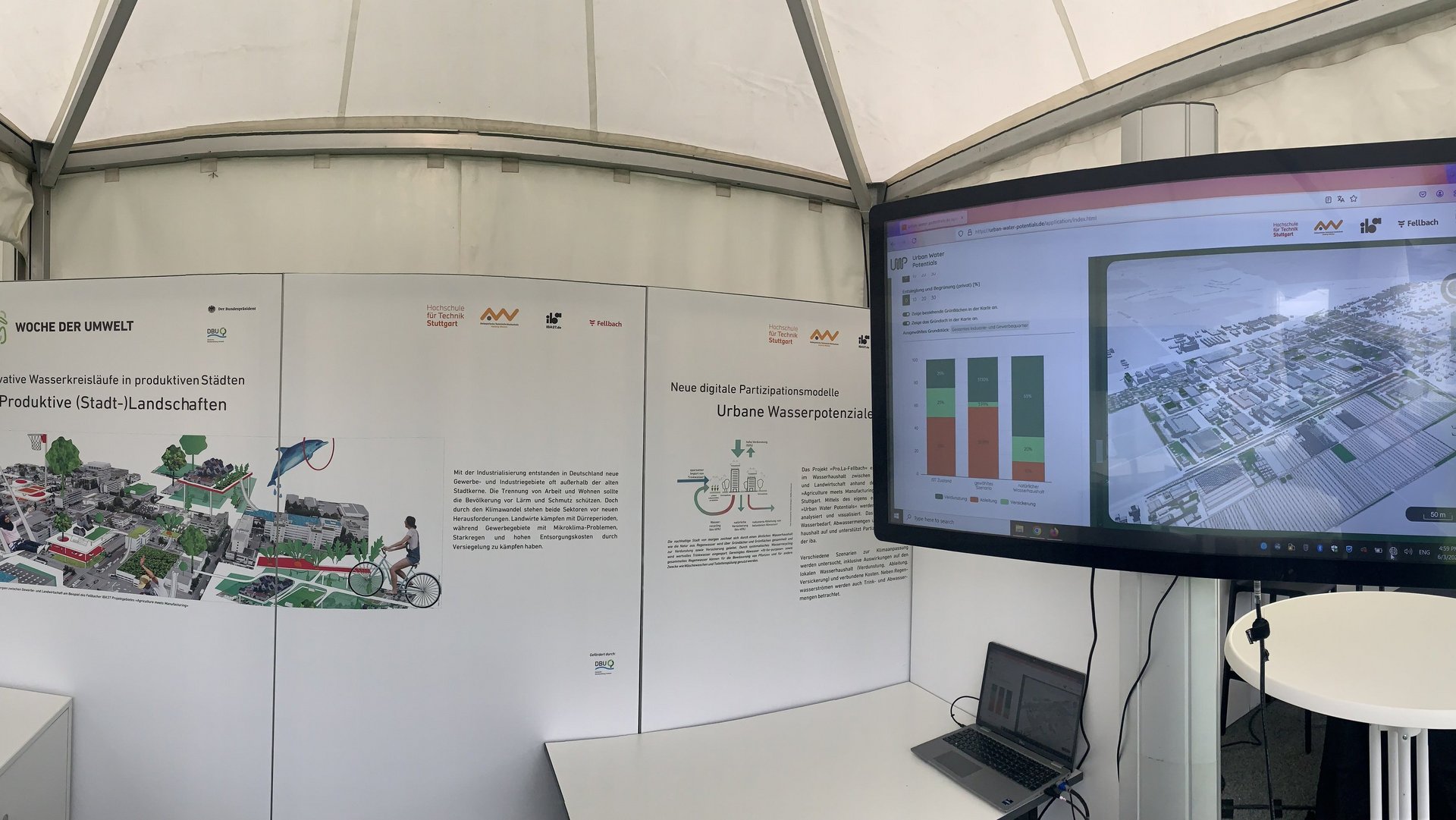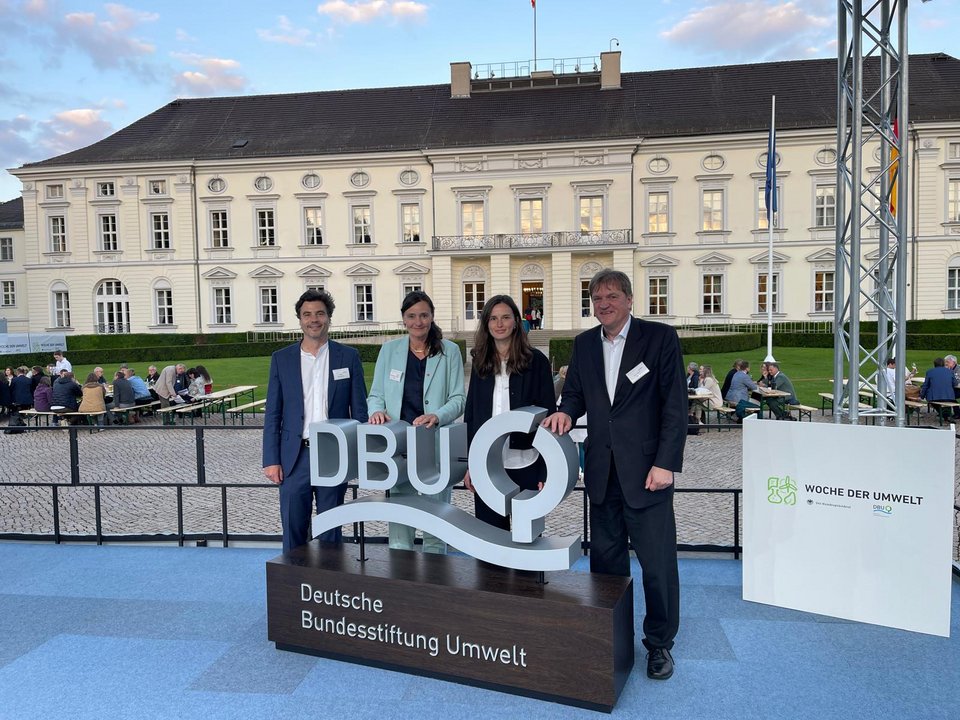The digital tool "Urban Water Potentials", developed by the Stuttgart University of Applied Sciences (HFT Stuttgart) and the Ostbayrische Hochschule Amberg-Weiden (OTH), makes water saving and synergy potentials in municipalities visible in a playful way. The tool is now being used in the Fellbach IBA'27 project.
"Urban Water Potentials" analyses and visualizes possible synergies and greening scenarios in the heavily sealed and densely built-up industrial area of the municipality of Fellbach. The web application shows the water demand, wastewater volumes and rainwater management for the properties of individual businesses.
Background: Periods of drought and heavy rainfall - climate change means increasing challenges for municipalities. For example, June and July 2024 were characterized by intense heavy rainfall and flooding, while the years from 2018 to 2023 brought drought years in Germany and Europe, some of which had a severe impact on vegetation and agriculture (see data from the Helmholtz Centre for Environmental Research).
The prototype was presented for the first time as one of 190 projects at the beginning of June 2024 at the "Week of the Environment" in Berlin's Bellevue Palace. The exhibition curated by the German Federal Environmental Foundation at the seat of the Federal President honored the most innovative ideas relating to the most important environmental and sustainability issues.
Tool for urban planning
The Fellbach IBA'27 project "Agriculture meets Manufacturing" clearly demonstrates how the vital resource of water has been handled up to now: while rain from the heavily sealed industrial area flows as wastewater into the sewage treatment plants, which are overloaded by heavy rainfall, the adjacent agriculture next door needs large quantities of valuable drinking water to irrigate food crops. But how can the neighbors of a district be persuaded to use water responsibly and implement climate adaptation measures? The municipality's influence is limited, as Fellbach itself only has a small amount of land in the project area.
The tool can be used for urban planning: Using various scenarios, different ways of adapting to climate change can be run through online. The respective effects on the local water balance (evaporation, drainage, infiltration) and the associated costs - and potential savings - become visible. In addition to rainwater flows, the tool also makes statements on drinking water and wastewater volumes - depending on the sector structure.
Great interest at the Week of the Environment in Berlin
The prototype is based on detailed, GIS-supported analyses of the water balance in industry and agriculture. Using a new, participatory approach (e.g. workshops, interviews), the researchers from the two universities determined the consumption data, quantities and qualities of drinking and waste water. In combination with data from water and waste disposal companies as well as other data, real consumption data could be derived into transferable, typical demand data sets.
The tool was met with great interest by representatives of local authorities in particular at the 2024 Berlin Environment Week. In practice, it is often the task of the municipality to convince property owners of the need for climate adaptation measures. If potential savings are identified, investments could make sense in the long term.
The team includes: Dr.-Ing. Steffen Wurzbacher (HFT Stuttgart), Prof. Dr.-Ing. Volker Coors (HFT Stuttgart), Prof. Dr.-Ing. Sonja Bauer (OTH), Katja Schulze (HFT Stuttgart), Tanbir Sazid (OTH), Thunyathep (Joe) Santhanavanich (HFT Stuttgart) and Lars Roth (HFT Stuttgart).
Further information about the interactive tool: Urban Water Potentials
Report on the IBA`27 website: Link



![[Image: Homepage HFT-Stuttgart]](/fileadmin/Dateien/Forschung/Eigene_Grafiken/logoHFT-Stuttgart_.png)
![[Image: OTH Amberg-Weiden]](/fileadmin/Dateien/Forschung/Partnerlogos/OTH-Amberg-Weiden-Logo-01.jpg)
![[Image: DBU]](/fileadmin/Dateien/Forschung/Projekte/Foerdererlogos/Logo_DBU.jpg)

![[Image: HP iba.fellbach]](/fileadmin/Dateien/Forschung/Partnerlogos/iba-Logo.png)